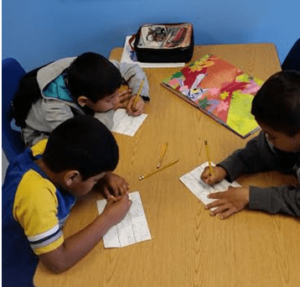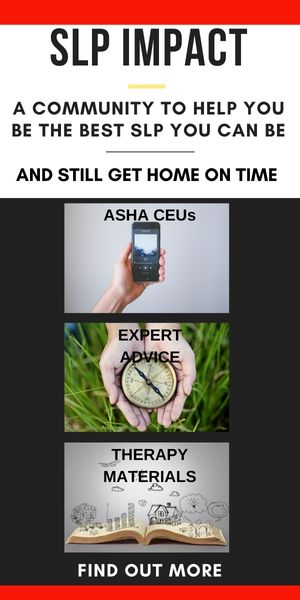Speech therapy data collection makes me nervous. Sure, I know it’s good for me, but I question it every step of the way. Then, I start adding kids to my groups, and SLP-perspiration ensues. As I step over my buckets of sweat to grab a pen and scrap piece of paper, I wonder how we best take data in speech therapy?
Data Concerns

Why does data tracking make us so nervous? I have asked fellow SLPs, and it boils down to a few reasons:
Getting it Done Here’s the thing, SLPs. Data tracking is hard because you are trying to do it in real time. Your brain is going in many directions, and it’s a lot of work.
Taking GOOD Data We need speech therapy data collection to be continual to make sure we can measure the child’s progress. What does good data tracking look like? It has to be measurable. This sounds easy, but we all know that many factors contribute to the challenges of data-keeping: students’ behavior, level of cuing, chosen activity, etc.
4 Strategies for Better Speech Therapy Data Collection

1. Let students take their own data.
- Students put a check on a piece of paper when they say a sound as we go around the table.
- Students find /s/, /r/, and /l/sounds in the book we just read. They say the words and give themselves a check.
- Students use iconic phonology pages with 10 boxes under each picture and make their own checks.
- Students use a counter to track their number of repetitions per word while I track the level of cuing. Here’s an example: Thanh is able to say the initial /s/ at the phrase level with 100% accuracy with minimal verbal prompts – 127 repetitions.
2. Make it Explicit
Taking data should not be a secret affair. First, your students should know his goals. Second, he should know that our tally marks represent when he “finds his sound” or “answers a question” correctly. This makes progress happen faster! It is feedback for our students.
3. Take Good Data Less Often
It is impossible to continuously take good data constantly during every session. Here are various data-taking schedules. Find what works for you:
- “I take the first few minutes of each session to collect data on a set number of trials. Then the rest of the session can be spent on the activity without the worry of collecting data.”
- “I take data for 1-2 students per session rather than tracking of all students in the group. “
- “I usually get good hard data on goals once per month per student.”
4. Talk and share with your fellow SLPs
Years ago, I asked my 50 SLPs to share their data sheets. This helped me find a system that worked for me. Here are a few examples from our Bilinguistics staff: Data Template 1, Data Template 2, Data Template 3.





Excellent post! I agree with your suggestions. Having students take their own data illustrates the basic principles of self-monitoring and self-reinforcement, which pave the way for transfer and generalization of skills.
Rob,
Self-monitoring and self-reinforcement is an important part of our work with our students. I love the moment when a student begins to self-correct! Thank you for your feedback, Rob.
One more thing, Rob. I want to say thank you for the meaningful work you do for individuals who stutter. Your personal perspective and professional input gives so much to our students and families. It takes a village, and we are grateful you exist in our SLP-community.